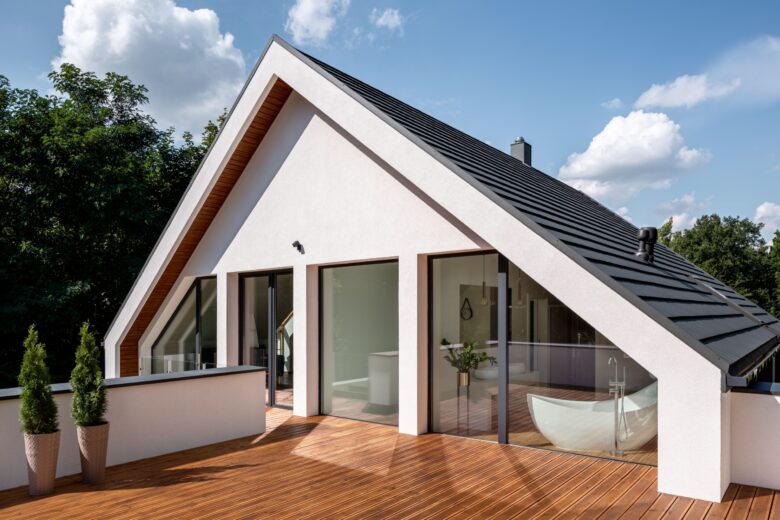For many of us, the things we think about the most before moving forward with any construction project include cost, practicality, and long-term value. However, we are now at a point where we need to prioritize sustainable building materials for those projects.
It is not enough to only look for the “best” materials on the market. You also need to ask about their sustainable qualities. Seeking out sustainably-sourced building materials should become the norm for all of us.
Why is it so important to prioritize the usage of sustainable materials for building projects? Discover the answer to that question and other relevant topics of great importance by continuing with the rest of this article.
Benefits Provided by Sustainable Building Materials
Sustainable or green building has grown to become a more popular practice in the world of construction. But why is that the case? Why are more companies adopting green building practices, and why are so many people on board with that shift? The answers to those questions are below.
Minimize the Environmental Impact of Your Building Project
It is no secret that our environment is in rough shape. Reports about the dire condition of our planet are coming out more frequently. We are also experiencing more extreme weather phenomena due to the effects of climate change.
Every little bit helps in the fight to save our planet. If we can minimize the adverse environmental impact that our building projects have on our surroundings, then we should aim to do that.
Using sustainable building materials will help in that regard. By using sustainable materials, we can mitigate the depletion of our natural resources. We can also reduce the amount of energy used to transport building materials by choosing locally-sourced goods.
Reduce Your Household’s Energy Consumption
A sustainable building does not only promote energy conservation while the project is in progress. Even after completing the building project, it can continue serving as a testament because of how well it conserves energy.
While in the middle of building your new home, you can ask the contractor to use sustainable materials and fixtures that will promote conservation. Examples of those features include energy-efficient lights, low-flow bathroom fixtures, and other items of that ilk.
Because you took the extra step and added conservation-focused items to your new home, it will be easier for you to reduce your consumption of valuable resources. That should yield all kinds of benefits down the line.
Cut Down on Construction Waste Produced
The work does not end once you finish the building project. After that, you still need to worry about discarding the accumulated waste. Waste disposal is another aspect of new construction that can negatively impact the environment.
Some construction companies may not pay attention to how they handle the waste. They may be content to dump all that trash somewhere and forget about it. Sustainable building materials do not produce as much waste as their more conventional counterparts. It will be easier to dispose of the trash because of that.
Furthermore, most sustainable materials used for building purposes are also recyclable. Even if a sizable pile of waste was left behind post-construction, there is a good chance that at least some of the items in that pile can still be recycled and reused down the line. It is good to know that even waste produced during construction is not completely useless if you were using sustainable materials.
Build a Home That Will Stand the Test of Time
Sustainable building is not solely focused on the creation of more eco-friendly structures. It also emphasizes longevity. If the home you built falls apart not long after they constructed it, then it is antithetical to the idea of sustainability.
You should prioritize using sustainable building materials because they allow you to construct something that will last for a long time. Many sustainable building materials are frequently used in construction. They will help ensure that your home can also stand the test of time.
Whether or not you are worried about the environment, you should still consider using sustainable building materials because they provide practical benefits. Chief among them is the longevity they bestow upon newly completed structures.
Make Home Maintenance More Manageable
Many sustainable building materials are easy to maintain. They do not require constant repairs, so there will be no need to bring in professionals every month. If you know the basics of maintenance, you should care for those materials adequately.
Maintenance is something we all recognize as important, but that does not always mean we can set aside time for it. For many people, that is a tough ask because of their schedules. It would be nice if you could make home maintenance a lower priority. Considering how they age; sustainable building materials can help you do exactly that.
Create a Healthier Home
One of the most overlooked benefits of sustainable building is the impact that it has on your health. Sustainable building materials are often natural substances. In contrast, some conventional building materials have harmful chemicals.
They may contain volatile organic compounds (VOCs) that could adversely impact your health if you are exposed to them long enough. Materials loaded with VOCs should have no place inside your home. That is another reason you should consider using sustainable materials.
Green building also involves the usage of plants; any household could benefit from having more plants. You want those plants inside your home not only because they add a nice splash of color. They should also be in your home because they help create a healthy environment.
Increase Your Home’s Value
Using sustainable building materials will probably not lower the cost of constructing or renovating your home. Depending on where you live, you may find that sustainable building materials are about the same level price-wise as their conventional counterparts.
In some cases, sustainable building materials may even be more expensive. We understand that you may be discouraged by how pricey sustainable building materials are. Still, the benefits we have detailed in this article create a compelling case for using them anyway. From a financial standpoint, using sustainable building materials also makes sense.
Long-term, homes that have sustainable building materials are more valuable. The investment you are making in those materials now could end up paying huge dividends long-term. Also, homes made using those materials are easier to sell. They will not stay on the market for too long because they are consistently in demand.
Feature Your Preferred Design Scheme
What kind of design scheme do you prefer? Do you want something classic and evocative of old-fashioned homes, or would you prefer to live in a home that features a more modern design? You may also have something completely different in mind for your home’s design scheme.
It is important to note that sustainable building materials will not limit the design possibilities for your home. Those materials are versatile enough to accommodate whichever design scheme you want to feature. You can highlight the natural beauty of the materials or mute them to a degree. The choice is up to you.
Sustainable Building Materials You Should Consider Using
Hopefully, you now have a newfound appreciation for sustainable building materials after learning about the benefits they provide. For the rest of this article, we will highlight some of the sustainable building materials they commonly use in home construction projects. Read up on them and identify the specific materials that you want to use.
Bamboo
Bamboo is one of the more underrated building materials. Even if you are not interested in green building, using bamboo in your construction project is smart because of the qualities it possesses. According to Elemental Green, bamboo is a pretty sturdy material. It rivals certain types of wood in terms of hardness, so you do not need to worry about your bamboo fixtures suddenly snapping.
We also cannot forget about the flexibility of bamboo. Bamboo can hold up well to certain external forces because it can bend easily. The lightness of bamboo also makes it easy to work with. You can complete building projects faster if bamboo is one of the construction materials.
Worrying about bamboo’s sustainability is also unnecessary. Bamboo grows incredibly fast. You will not be contributing to the depletion of bamboo forests anytime soon. Use bamboo to create beautiful floors, fixtures, and pieces of furniture.
Cork
Cork is another sustainable building material that deserves a spot inside your home. Whereas bamboo is prized for its surprising sturdiness and flexibility, cork’s main selling point is its durability. This is the type of material that can handle constant impact and remain intact.
To take full advantage of cork’s resilient qualities, you should use it to create your sub-floor. When used in that spot, cork will keep your floor protected while also showing minimal wear. You should also consider using cork for insulation purposes. Aside from regulating temperatures, cork is also great for reducing ambient noise.
Precast Concrete
Next up, we have precast concrete. If you are wondering why we are highlighting precast concrete specifically, that is because it is more sustainable than other types of concrete. Less energy is required to create precast concrete, and that is why it gets the nod here.
Precast concrete slabs provide many of the same benefits that concrete does. It is a strong and durable material that can provide much-needed stability. You can also expose the concrete to the elements without worrying about it too much.
The only real downside to using precast concrete is you cannot customize it once it is at the construction site. You have to correctly identify the type of precast concrete you want from the start to end up with your desired final product.
Recycled Plastic
You probably did not expect plastic to appear in this article, but here we are. When you see those images of plastic islands roaming the ocean, you cannot help but think of the material as something bad for the environment. As this article from the BBC points out though, the material itself is not to blame. Instead, the reason plastic has become such a much-maligned material is due to the way we dispose of it.
Rather than recycling the plastics we already have, we dispose of them and create more waste. By recycling plastics, we can effectively reduce our collective waste production and create some useful building materials in the process. Plastic possesses many qualities that are in good building materials. We need to take full advantage of plastic’s usefulness by recycling it properly.
Straw
This list of sustainable building materials would not be complete if we failed to include straw. When compacted and stacked on top of one another, straw bales can be load-bearing structures. They can even use them to create new walls if you cover them the right way. Straw can also be a substitute for different kinds of insulating materials. Use them to keep your home nice and comfortable throughout the year.
Wool
Lastly, we wanted to mention wool as another material that you can use for sustainable building. Wool is not as versatile as some of the other materials we have discussed here. Truthfully, it only works as insulation. Even so, wool can work brilliantly as a substitute for more conventional insulation materials.
The temperature regulation it provides is top-notch, and it can also act as an effective barrier against external noises. The fact that wool can also keep the air inside your home clean is another reason you should strongly consider using it.
Beyond Sustainable Building Materials
Sustainable building is becoming the norm in the world of construction and that is an encouraging development. If you want your home made with sustainable building materials, we at Eco Minded Solutions can help. Get in touch with us today so we can discuss which specific materials you should use to build your new home!


